Royals pitchers and catchers reported to spring training today. Game on.
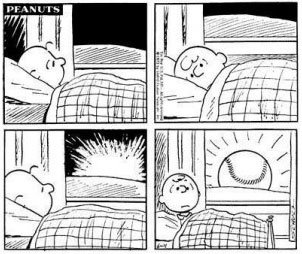
And as we wait to see how that works out…
In my last post, I used a photo of Oscar Gamble as a lead-in for discussing the nominees for the Oscars. Two days after that post, I’m sad to say, Oscar Gamble died at the age of 68. The cause was a rare tumor of the jaw (he did not chew tobacco).
Oscar Gamble was drafted by the Chicago Cubs in 1968, fittingly the same year that the musical “Hair” opened on Broadway. Oscar and his Afro became part of the highlight reel of baseball in the disco 1970’s. He was known to dress like the coolest cat in a discotheque, and he even owned one – Oscar Gamble’s Players Club in Montgomery, Alabama.
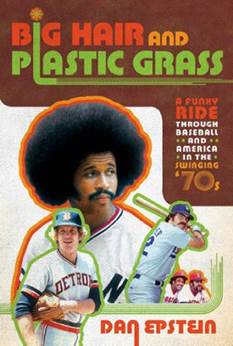
Gamble had a 17-year major league career, and the person who started him on that path was none other than Buck O’Neil.
Buck O’Neil Finds Oscar Gamble: When Buck O’Neil was managing the Kansas City Monarchs in 1953, his shortstop was Ernie Banks. With some guidance from Buck, Ernie signed with the Cubs. After the Monarchs’ 1955 season, the Cubs hired Buck as the first African American to be a full-time MLB scout. Buck was instrumental in the signing of several major leaguers, most notably Lou Brock, Lee Smith and Joe Carter.
Buck’s favorite story of scouting is about his visit in 1968 to Tuskegee Institute to see a game between the college and a semipro team. He liked the moves of a teenager on the semipro team and got driving directions to where the kid’s next game would be. As recounted by Buck in his autobiography I Was Right on Time:
“Here is what a scout lives for: I’m driving in my Plymouth Fury down a dirt road outside of Montgomery, Alabama. The road is so narrow I’m thinking I must have taken the wrong fork a few miles back. Then, suddenly, I hear the crack of the bat and the noise of the crowd…there’s a diamond cut out of the woods. All around the field on this beautiful Saturday afternoon are people in lawn chairs, dipping into picnic baskets. They’re there to watch two semipro teams.
Buck spotted the teenager among his mostly older teammates. He liked the kid’s arm, his bat, his speed. But…
“Most of all, I like the fact that nobody else in pro baseball has ever seen this kid…I feel a little like the prophet Samuel, checking out the sons of Jesse for a new king to anoint. The youngest son works the count to 3 and 2, waiting for the right pitch to hit, and when he gets it, he drives the ball to deep center, where the centerfielder catches it at the fence. He’s the one all right.”
That’s all Buck needed to conclude that Oscar Gamble had major league potential. He sent his scouting report to the Cubs who drafted the 18-year old Gamble in 1968 in the 16th round.
1969 – Leo Durocher and the Chicago Cubs: Gamble played in the Rookie League in 1968 and went to Cubs spring training in 1969. Cubs manager Leo Durocher said “I know it sounds wild, but this kid compares with Willie [Mays] when Willie was first coming up…Gamble can run, throw, catch a ball, and he swings a quick bat.” Durocher also liked his attitude, “Haven’t seen him yet when he wasn’t smiling.”
Gamble started 1969 in the minors and moved up to the Cubs for a “cup of coffee” of 24 games at the end of the season. Notwithstanding Durocher’s initial impression, the Cubs traded Gamble to the Phillies.
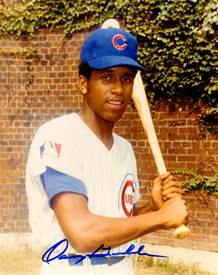
1970 to 1972 – Philadelphia Phillies: Gamble was with the Phillies for three years, moving back and forth between the parent team and the minors. Gamble’s first year with the Phillies was the last for Connie Mack Stadium. Originally built as Shibe Park in 1909, the stadium was the home venue for the Phillies from 1909 to 1970.
Gamble had the distinction of logging the last hit and RBI at the stadium on October 1, 1970. His single knocked in Tim McCarver with the winning run in the 10th inning. Unruly fans began dismantling parts of the stadium during the game, and at the end, stormed the field to claim bases and infield dirt as souvenirs. The mayhem triggered a cancellation of the post-game ceremony (a precursor of Disco Demolition Night as discussed below in Lonnie’s Jukebox).
In this photo from the 1972 team yearbook, his wife’s hair gave a hint of Oscar’s future:
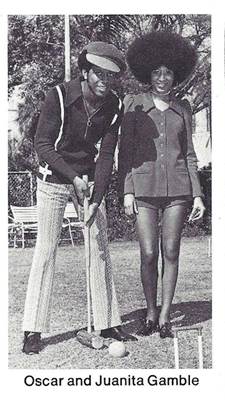
1973 to 1975 – Cleveland Indians: After the 1972 season, Gamble was traded to the Indians. In Cleveland, both his game and his hair blossomed.
In addition to the attention he got for his Afro and his snazzy clothes, Gamble was noticed for his unique batting stance. He stood at the plate in a deep crouch with his back almost parallel to the ground. He claimed this helped him see the ball better as his eyes were right over the plate and close to where the ball was pitched.
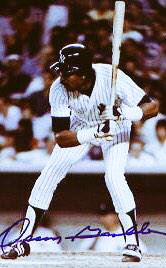
The Afro made it hard for Gamble to keep his cap on his head when he was running the bases or chasing a ball in the outfield. The classic photo depicting this phenomenon:
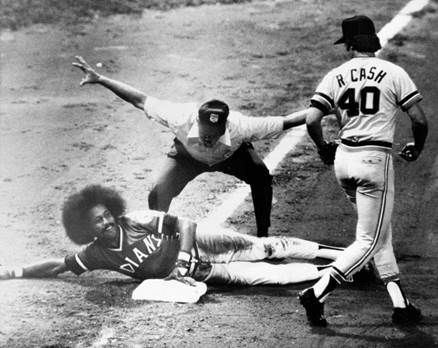
1976 – George Steinbrenner and the Yankees: Gamble had three solid seasons with the Indians, but in November of 1975, he was traded to the Yankees for Pat Dobson. Since Gamble had not yet been in a Yankee uniform, Topps produced a baseball card for its “Traded” series by airbrushing in a Yankees hat and (crooked) pinstripes over an old Gamble photograph. It is one of the best known baseball cards among collectors, but was based on a fiction. The hat and uniform are for the right team, but the hair is not. George Steinbrenner saw to that.
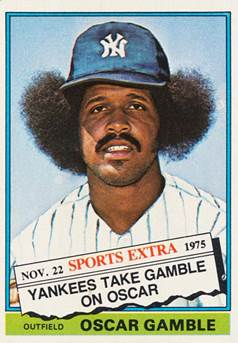
Steinbrenner had purchased the Yankees in 1973, and from the owner’s box on his first opening day, he noticed that some players standing for the National Anthem had hair too long for his taste. He wrote down the numbers of the offending players (he did not recognize the players and the Yankees do not have names on the back of their uniforms) and instructed manager Ralph Houk to tell the players to trim their hair. A military-style grooming policy was adopted: “All players, coaches and male executives are forbidden to display any facial hair other than mustaches (except for religious reasons), and scalp hair may not be grown below the collar.” The exception for mustaches was a savior for Sparky Lyle, Thurman Munson and, upon arrival in 1975, Catfish Hunter.
When Lou Piniella joined the Yankees in 1974 , he was unhappy to find he would need to trim his locks. As told by Lou:
“I didn’t know Mr. Steinbrenner at all. I had just been traded there. I was joking around. I said ‘Our Lord Jesus Christ had long hair, and things seemed to work out for him.’ [Steinbrenner] said ‘Come with me.’ We walked across the street to the Ft. Lauderdale swimming pool and he said, ‘If you can walk on water, you can wear your hair any way you want.’”
Gamble’s 8-inch Afro did not stand a chance. When Oscar arrived at spring training in 1976, manager Billy Martin said he could not get his uniform until he went to a barber hired by the team. His was accompanied by his wife (who wept) and new teammate Elson Howard (who said “bushels” of hair came off). Martin joked “If I see Oscar can’t hit without his hair, we’ll get it back. I had it saved just in case.” Gamble also lost an endorsement deal with Afro Sheen, but Steinbrenner paid him the $5,000 he would have earned.
Click here for an entertaining video about the haircut (1:55).
Oscar was rewarded for his hair loss by getting to play in the 1976 World Series. He also got to see his wife Juanita sing the National Anthem in Yankee Stadium prior to an ALCS game against the Royals. He is often quoted for his description of the insanity and dysfunction of the 1976 Yankees under George Steinbrenner and Bill Martin: “They don’t think it be like it is, but it do.” Whatever that means.
But Oscar would be gone the next season because Reggie Jackson was on the way to play the outfield in Yankee Stadium. Also, the Yankees needed a shortstop, and Bill Veeck was happy to oblige.
1977 – Bill Veeck and the Chicago White Sox: Bill Veeck owned the White Sox from 1959 to 1961 and then came back to own them again from 1975 to 1981. In 1977, he rebuilt the team with a “rent-a-player” scheme of trading for stars in their option years. He got bargain prices and decent trades because the players would be free agents after the 1977 season.
One of the players Veeck picked up in this process was Oscar Gamble who came in the trade that sent shortstop Bucky Dent to the Yankees. Veeck did not have Steinbrenner-style hair rules, and so Gamble grew his ‘fro back – matching up nicely with the disco era uniforms introduced by Veeck (ridiculed by some fans as softball uniforms or pajamas).
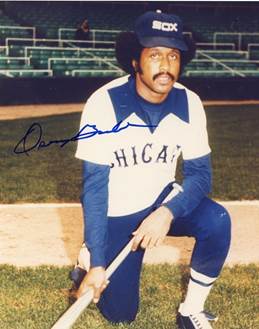
Veeck’s scheme worked well as the team broke the White Sox record for homers and became known as the “South Side Hitmen.” Gamble hit .297 with 31 homers to help lead the team to a surprising 90 wins. But the Royals won 102 games to take the division before bowing out to the Yankees in the ALCS. The White Sox drew a record 1,657,135 fans, and Veeck was named MLB executive of the year. He had World Series tickets printed and sent them to season ticket holders as keepsakes.
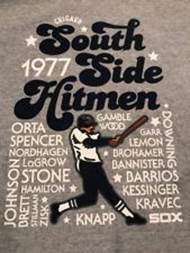
The Gamble/Dent trade also turned out well for the Yankees. In 1978, Dent hit his famous home run that won the pennant for the Yankees in the season-ending tie-breaker against the Red Sox (forever to be known to Red Sox fans as Bucky “Fxxking” Dent).
1978 – Ray Kroc and the San Diego Padres: As Bill Veeck knew, he would be losing some of his “rent-a-player” crew to free agency. Gamble was one of these, and he signed with San Diego. The Padres were owned by Ray Kroc who Veeck knew from the 1930’s when Veeck ran the concessions at Wrigley Field. The local salesman selling him paper cups was Ray Kroc who years later would become rich as the owner of McDonald’s. Kroc bought the Padres in 1974 and had plenty of money to sign free agents. As Veeck tells the story, Gamble met with Kroc and had a figure in mind for his salary. But before he could say anything, Kroc offered him twice as much, “Take it or leave it.” Gamble took it and also got to keep his big hair.
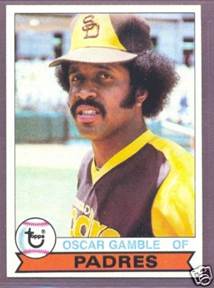
1979 – Texas Rangers: A multi-player trade landed Gamble in Texas to start the 1979 season. His Afro was good for almost half of the season, but on July 30, he was part of a trade that sent Mickey Rivers to Texas and returned Gamble to the Yankees.

1979 to 1984 – Back to the Yankees: Gamble’s combined 1979 season with Texas and New York was one of his best. He finished with a .358 average and 19 homers. He did not have enough plate appearance to qualify for the batting title won by Fred Lynn who hit .333.
Although his Afro no doubt suffered some trimming, Gamble’s baseball cards and photos after he returned to the Yankees indicate some loosening of the rules. Maybe the managers were changing too fast to notice. In Gamble’s six years from 1979 to 1984, the Yankees had eight managers (counting Billy Martin’s three separate tenures in that period).
The baseball card below is from 1980, the same year that Oscar Gamble almost beat the Royals in the ALCS. The Royals were ahead by two games to none and needed only one more win to head to their first World Series. Frank White hit a homer off Tommy John in the fifth to give the Royals a 1-0 lead. In the bottom of the 6th, Reggie Jackson doubled and Gamble followed with a bouncer up the middle. Frank White got to the ball, but there was no play at first. Hoping to catch Reggie overrunning third, White threw to George Brett, but the throw was wild and Jackson scored. Gamble went to third on the throw and scored on a single to put the Yankees up 2-1. White had gone from star to potential goat, but he was bailed out when Brett hit a three-run home off Goose Gossage in the 7th. The final score was 4-2, and the Royals were on their way to play the Phillies in the Series.
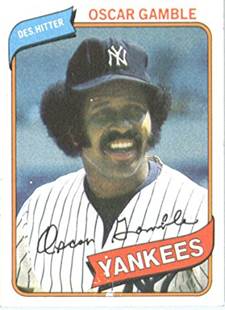
Playing Career: In 1985, Oscar moved to the White Sox for his final season. In his 17-year career, he changed teams eight times – a true “journeyman” ballplayer. He had a few banner seasons and extended his career as a dependable platoon player and designated hitter. He played in two World Series with the Yankees (losses, in 1976 and 1981). Oscar was the star of the 1981 ALDS when he hit .556 with two homers to lead the Yankees to a win over the Brewers. His career numbers: average of .265, on-base percentage of .356 , slugging percentage of .454, exactly 200 homers, a devilish 666 RBIs and he walked more than he struck out. Stat nerds will appreciate that that he had an OPS+ of 127.
After Baseball – No Hair: Sometime after his retirement from baseball, Oscar’s hair also retired.
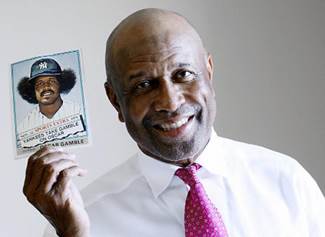
The Yankees and Facial Hair: The Yankee hair restrictions have remained in place for over 40 years. During that time, the policy has been applied to the likes of Goose Gossage (Yogi had to tell him), Don Mattingly (who was benched) and Johnny Damon (who trimmed his Jesus-like beard and hair when he moved from the Red Sox to the Yankees). Yankee players joke that incoming teammates with long hair or beards first have to see the Yankee Clipper (the barber, taking on the nickname of Joe DiMaggio).
Grooming rules had not been common before the 1970’s because player beards and mustaches had been rare. In 1972, the Oakland A’s changed the landscape. Reggie Jackson showed up at spring training with a mustache. Owner Charlie Finley thought Reggie was trying to be a showboat, so he leveled the facial playing field by offering incentives to all players who grow mustaches. A good number of players did so, and the 1972 World Series against the clean-shaven Cincinnati Reds was dubbed the “Hairs vs. Squares.” Oakland won that Series and repeated in 1973 and 1974.
At Cincinnati, a strict grooming policy was in effect from 1966 to 1999. Former A’s pitcher Rollie Fingers was contemplating retirement after the 1985 season. The Reds tried to sign him, but when told he would have to shave his mustache, Fingers said Reds owner Marge Schott should shave her prized dog Schottzie instead. So Fingers retired.
Don Mattingly has a strange beard history – he was benched as a player for facial hair by both the Yankees and in the cartoon world of the famous Simpsons’ episode “Homer at the Bat.” But when Mattingly became the manager of the Miami Marlins in 2016, he (and/or the owner) required the players to be clean shaven. The rule was dropped after one year. Another Yankee is now in charge of the Marlins, but Derek Jeter is reportedly not planning to emulate George Steinbrenner in this area.
In 2016, outfielder Clint Frazier started the season in the minors with the Indians. He had long red hair, saying “I play like my hair is on fire. It’s fiery, like my personality, big…It makes me one of a kind.” He was traded to the Yankees and joined their AAA farm team – and trimmed his hair. He showed up in Yankees spring training in 2017 with long hair. Manager Joe Girardi sent him to the Yankee Clipper for a short tidy cut (below).
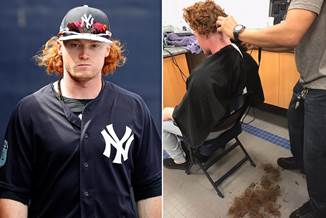
Pitching star David Price declined to consider the Yankees when he became a free agent after the 2015 season. Saying he would not shave his beard to wear pinstripes, Price signed with Boston.
So what about Bryce Harper when he becomes a free agent after the 2018 season? The Yankees are expected to go after him, and if they sign him, what will change – the Yankees policy or Harper’s beard? Stay tuned.
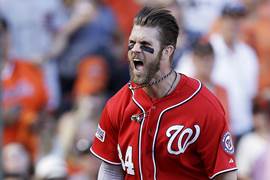
[Rich “Goose” Gossage Trivia: When Yogi Berra told Goose Gossage to shave off his beard, Goose complied, but took advantage of the mustache exception. After his shave, he sported an exaggerated mustache extending around his lips and down to the jaw line, a look he still has today. I always enjoyed Gossage as a fun baseball character, and Royals fans of a certain age will never forget two homers he served up to George Brett: the three-run blast to win the 1980 ALCS and the 1983 pine-tar homer.
But the grooming battle with the Yankees in 1983 does not compare to the one Gossage has been having with the Yankees this past week. He has been a spring training instructor in the past for the Yankees, but General Manager Brian Cashman did not invite him this year. Part of the reason is that Gossage is outspoken about how he thinks current players and management are hurting the game. His latest blast can be read here. Gossage made similar statements after the 2015 season, and the “other side” was taken by Kansas City-based sportswriter Jeff Passan of Yahoo Sports. If you read the first sentence of Jeff’s column, you will not be able to resist reading all of it. Click here.]
Lonnie’s Jukebox – Disco Edition: Oscar Gamble’s Afro look was perfect for the disco era. If he had stayed with the White Sox after his 1977 season, he would have seen Disco Demolition Night in 1979. Mike Veeck (Bill’s son) and a local disc jockey thought it would be fun for disco-music haters to bring records to be blown up between games of a double header. The promotion was very successful in drawing a crowd – over 60,000 people squeezed into Comiskey Park (capacity 41,000).
Everything else went bad. It was more of a concert crowd than a baseball crowd (best clue: the smell of marijuana wafting through the stadium). After the first game, records were sailed and delivered to the field where they were stacked and exploded. Fans then stormed the field, stealing bases and vandalizing the stadium. There were also thousands in the streets around Comiskey, many gathering around their own bonfires of records. Riot police were called in. With all of the chaos, the White Sox had to forfeit the second game. Bill Veeck did a lot of things right, but no doubt regretted letting his son hold this promotion.
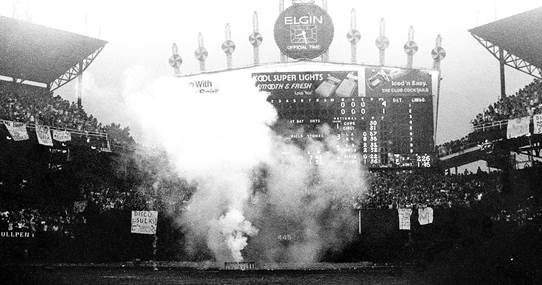
My 40-year-ago memories of disco are mostly of Donna Summer, Abba (as currently popularized in Broadway’s “Mamma Mia!”), “Fly, Robin, Fly” (Silver Convention) and the soundtrack from Saturday Night Fever. No doubt all of these music sources were well represented on Disco Demolition Night. Saturday Night Fever was released in November of 1977, and I remember the time well because I was an investor in a bar/restaurant in Brookside called The Brewery. We opened on December 6, 1977, and the hits from Saturday Night Fever were constantly played on the jukebox. My favorite was “Night Fever” and you can enjoy it here (as over 73 million have already done). [The business lesson I took from this experience is one that I pass along to anyone who asks: Do not invest in a bar.]
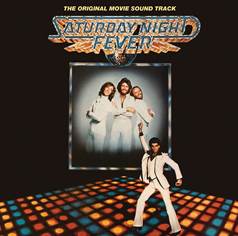
One thought on “Hot Stove #68 – The Hair-Raising Tale of Oscar Gamble (RIP)”
Comments are closed.